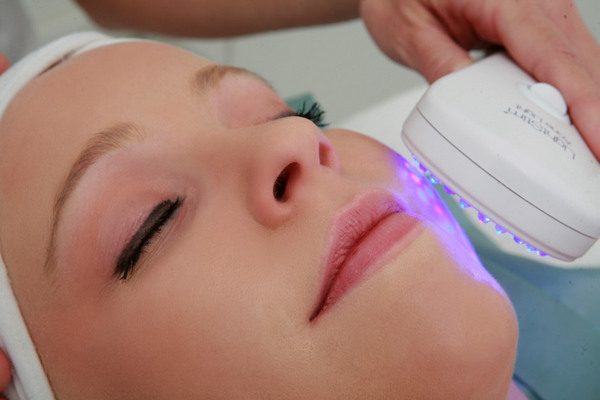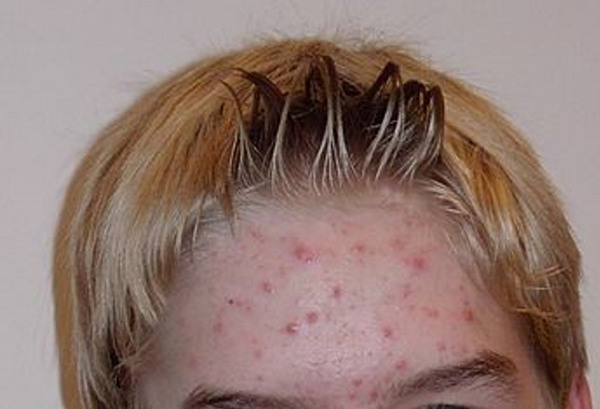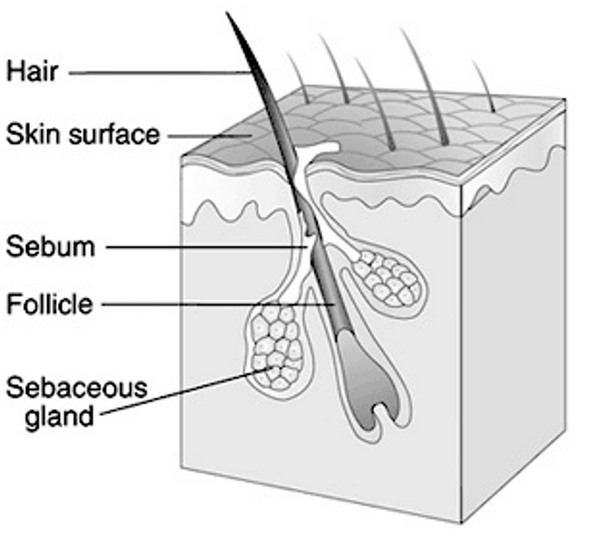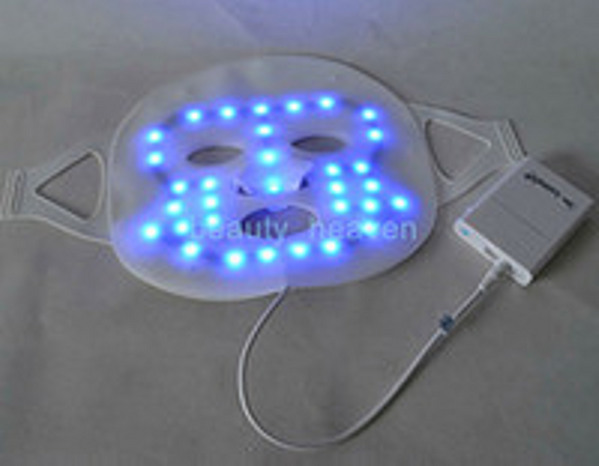 |
|
Fig 1: A woman receiving light therapy skin treatment. (Image courtesy: redefiningfederalism.org) |
Introduction:
In 1967, a curious scientist in Hungary thought to perform an experiment to check if laser radiation can cause cancer in mice. He shaved dorsal hair and divided the mice in two set of groups and exposed one group of mice with a low powered ruby laser (694 nm). To his regret and to the joy of mice, they didn’t succumbed to cancer, but to his surprise, he observe that the mice treated with laser had grew back more hair as compared to the untreated group. This was the beginning of an era of photo bio-stimulation sparked by Endre Mester.
This article deals with the curiosity of many people and especially teenagers: Will LED help in facial treatment? Though this note couldn't arrive to a concrete conclusion that if one goes for LED photo therapy, he/she would surely come out with a stunning looks and the article argues why.
We talk about Acne and the scientific reason why we have pimples and how it could be treated through LED photo therapy. Moreover we talk about how photons interact with skin cells and how useful could it be for us. We discuss two experiments conducted recently on how blue (633nm) and red (415nm) light has an effect on facial skin. We end the article with all important take-a-ways that everyone should carefully read before conducting such a treatment.
Acne:
Major skin facial issues come in the form of Acne (as shown in Fig 2) which is caused due to bacteria known as Propionibacterium acnes (P.acnes). It’s because of improper functioning of oil glands due to P.acnes and is characterized by seborrhea (scaly red skin), comedones (blackheads and whiteheads), papules (pinheads), nodules (large papules) and pimples.
 |
|
Fig 2: Acne of a 14-year old male during puberty (image courtesy: Wikipedia.org) |
It's commonly seen during puberty, where the sebaceous (oil) glands are stimulated because of the release of hormones (such as testosterone in case of men, regardless of sex) from adrenal gland for both males and females. It could be inflammatory or non-inflammatory in nature and often painful.
As shown in figure 3, human skin has pores that are connected to sebaceous (oil) glands located under the skin. These glands are connected to the pores via small canals known as follicles. An oily liquid produced by these glands known as sebum is used to carry dead skin cell through the follicles to the surface of the skin and hence excreted out of the body. A hair generally grows through the follicle. Pimples make its presence felt when these follicles get blocked resulting into accumulation of unwanted oil under the skin.
This swelling once under the attack of P.acnes bacteria leads to infection creating more trouble to the skin cells.
 |
|
Fig 3: Hair follicle and sebaceous gland (image courtesy: Wikipedia.org) |
Use of photo therapy:
The interaction of light of wavelength between 600 and 950 nm can take place in three ways:
1) Wound healing and tissue repair.
1.a) Yield a fresh skin
1.b) Reduce wrinkles
1.c) Moisturize dry skin
2) Relief of inflammation in case of edema (swelling) or acute injuries.
3) Relief from neurological pain.
How photo therapy interacts with skin cells:
Interaction of photon (from the LED) happens very similar to that of the reaction due to sunlight which is responsible to absorb Vitamin D through our skin.
Blue light reacts with the acne molecules in the sebaceous glands and kills the P. Acne bacterium, while red light helps in improving the blood flow which promotes the healing process.
Experiment 1:
In one of the experiments in 2006 carried out at Department of Dermatology, National Medical Center of Seoul, where Seung Yoon Lee and his colleagues tried to use quasi-monochromatic LED devices of blue (415nm) and red (633nm) light on 24 patients with mild to moderately severe facial acne. The process of treatment was carried out twice a week continuing for four weeks. The results were affirmative; the mean percentage improvements for non-inflammatory and inflammatory lesions were 34.28% and 77.93% respectively.
Detailed observation showed that melanin levels were significantly reduced after the treatment. The skin showed better texture and brighter skin tone for 14 out of 24 patients.
Experiment 2:
In another experiment in 2006 carried out at Department of Dermatology, Mount Sinai School of Medicine, New York by David Goldberg and Bruce Russell, the results were affirmative under the long run of treatments carrying through 12 weeks. In the experiment, 24 patients were treated for mild and severe Acne Vulgaris using blue (415nm - 48 J/cm2 - 20 mins per session) and red (633nm - 96 J/cm2 - 20 mins per session) LED phototherapy. The treatment was carried out twice per week three days apart, with an alternative exposures between blue and red bio-stimulation.
At the end of four weeks, the mean lesion count reduced to 46% and after 12 weeks reduced to 81% which seems to be concluded a very high improvement on the skin level.
Benefits of using LED photo therapy:
Following are termed to be the benefits which can be procured through the photo therapy, though it is to be understood that the extent of such improvement could vary from person to person.
1. Increase in the level of oxygen and improved blood flow.
2. Enhances the production of fibroblast which creates elastin-elastic bases fibers, strengthening the connective tissues.
3. Mitochondria are stimulated by monochromatic light energy.
4. Help enhances the process of creating new blood capillaries which eventually helps improve the blood flow.
5. Stimulates the release of antioxidant enzyme which decreases the process of oxidation and helps protect skin from cellular damage.
6. Improves muscular relaxation.
7. Increases lymphatic drainage (i.e. helps in removing waste products through blood).
 |
|
Left: Fig 4: Mitochondria and its structure found in every cell. (image source: Wikipedia.org). Right: Fig 5: Fibroblast found in every cell. (image source: Wikipedia.org) |
Take-a-ways:
"So what can we take away from the experiments? What are the things that are yet to be answered?
A. Experiments were using alternative treatment with red and blue LED's. So in general, will we also need to use an alternate light treatment for effective results?
B. Experiments have a prolong treatment period, even carrying till 12 weeks. So we really need to be patient on this note.
C. The treatment was carried out for 20 mins, so what is the optimum dose?
D. Optimum level of energy to be used? If we cross the threshold, it may cause harmful effects. Optimal effective energy is argued to be 4J/cm2 to 8 J/cm2.
E. The wavelength to which the skin would give a better response. Argued are 415nm (Blue) and 633nm (Red).
F. Whether to use a continuous LED light source or a pulsed power source is also in a state of discussion?
G. Treatment results vary from person to person.
Conclusion:
So, it would be agreed that though the level of interaction of photons with skin cells may be slow, it does have an effect. Having a non-painful treatment for mild to moderately severe acne vulgaris and other infections does show the hope of a new wave of technology in facial treatment.
 |
|
Fig 6: Commercially available LED facial mask (image courtesy: dhgate.com) |
The LED facial products are commercially available products (as shown in fig 6) and are targeted towards young teens and people who have enough money to try out the LED facial treatments themselves. But to be true, there still needs to be more experiments involved to validate and prove any concrete positive effect of LEDs on facial skin.
Author: Mr. Uttam M. Pal is a Contributing Editor at LED Inside, Trendforce Corporation, Taiwan. He completed his masters from Electrical Dept., IIT Bombay and bachelors from Sardar Patel University. His field of interest lies in Photonics and Biophysics. He can be reached at uttampal86@gmail.com
References:
1. “Mechanisms of Low Level Light Therapy”, Michael R Hamblin and Tatiana N Demidova, Proc. of SPIE Vol. 6140, 614001, (2006).
2. “Blue and Red Light Combination LED Phototherapy for Acne Vulgaris in Patients with Skin Phototype IV”, Seung Yoon Lee et al., Lasers in Surgery and Medicine, (2006).
3. “Combination blue (415 nm) and red (633 nm) LED phototherapy in the treatment of mild to severe acne vulgaris”, David J. Goldberg and Bruce A. Russell, Journal of Cosmetic and Laser Therapy. 2006; 8: 71–75.
















